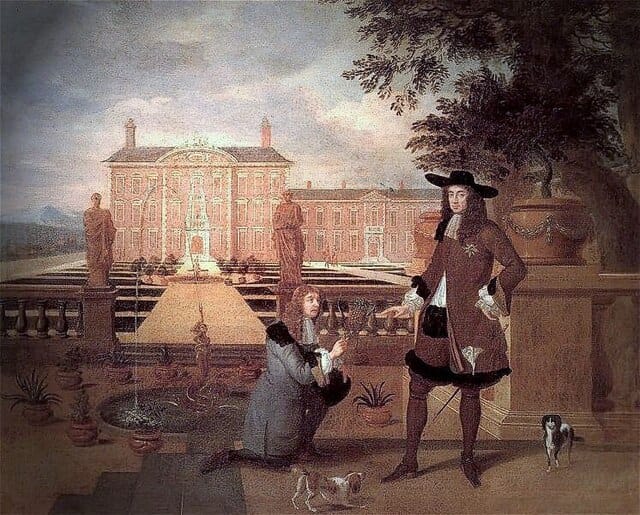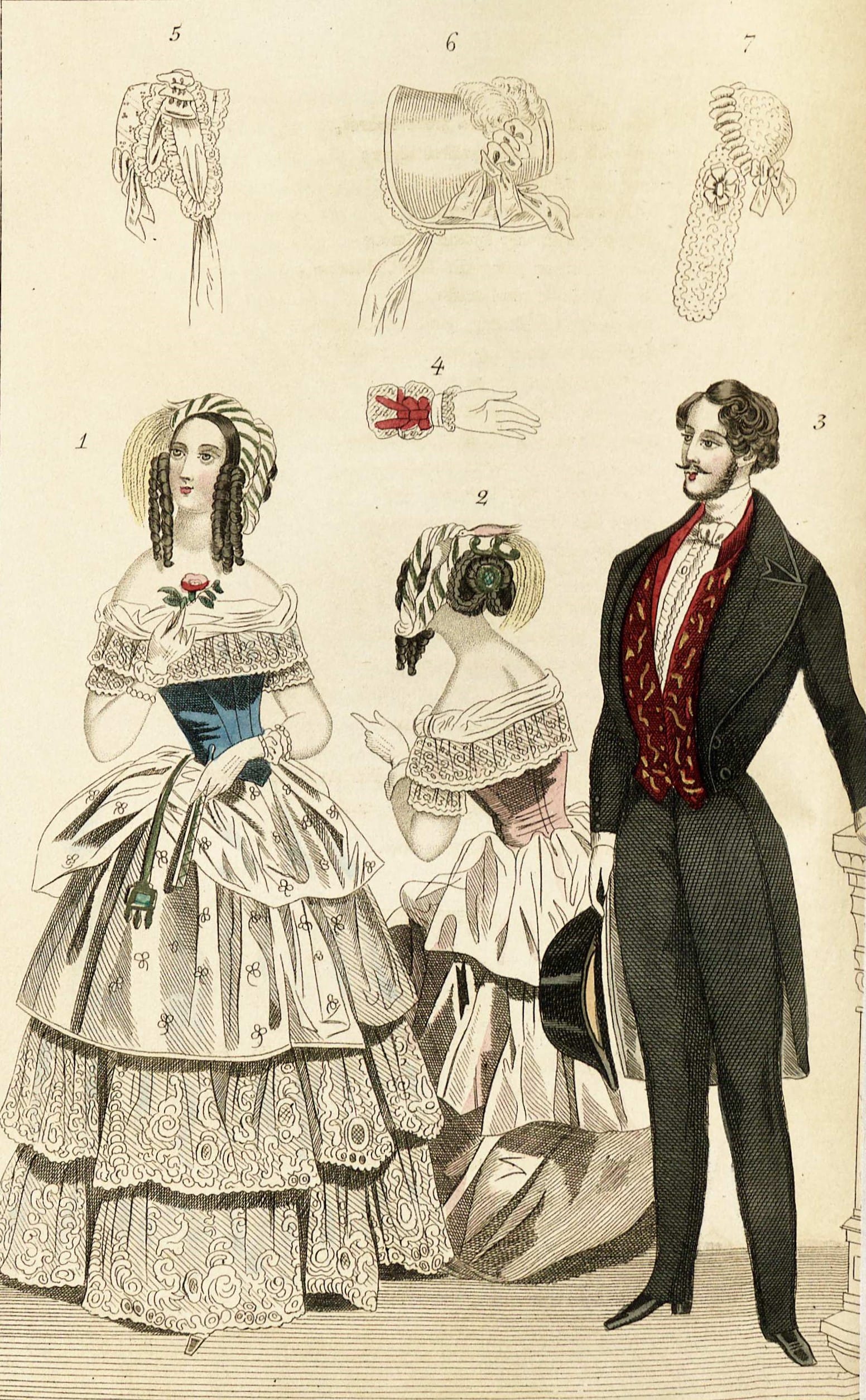A Gardener to the King
Welcome to Historical Heritage, where we highlight elegance, history and regal stories every week. Take a small break from our loud existence and enter a world of quiet elegance.
Remembering John Rose: Gardener to King Charles II

John Rose served as the royal gardener to King Charles II during a period when formal gardens, influenced by French and Italian styles, were becoming fashionable in England. Rose's work was primarily centered at St. James's Park, one of the oldest royal parks in London.
The park had fallen into disrepair during the Commonwealth period, but with the restoration of the monarchy in 1660, Charles II ordered its transformation. Rose, a master of horticulture, was appointed to redesign and manage the grounds. Under his care, St. James's Park was turned into a symbol of the restoration era, with formal layouts, tree-lined avenues, and beautiful flowerbeds.
Famous Roses
Rose was particularly famous for his knowledge of roses, a plant that became a symbol of loyalty and rebirth for the monarchy. In one famous anecdote, Rose is said to have presented a beautiful, rare rose to King Charles II, earning his praise. The king appreciated not only the beauty of the garden but also the fact that it symbolized the return of order and prosperity after the civil war.
Though his contributions are not as widely recorded as some royal architects or landscapers, John Rose’s work left a lasting impact on royal gardens in England, particularly at St. James’s Park. His work helped to shape the English garden tradition, influencing the evolution of gardening as both an art and a science in the following centuries.
Rose also worked on the gardens of other estates, including Windsor Castle. His expertise was sought after by the nobility, and his influence extended far beyond the royal household. His career marked a turning point in the history of British horticulture.
The Lavish Ball of September 8, 1811: A Night of Grandeur at Carlton House

On the evening of September 8, 1811, the glittering world of Regency-era high society gathered at Carlton House in London for one of the most extravagant and talked-about events of the year—a ball hosted by George IV, then the Prince Regent. This event, like many under George’s reign, was a symbol of opulence, excess, and the cultural vibrancy of the period.
The Prince Regent and His Taste for Luxury
By 1811, George IV had assumed the role of Prince Regent, overseeing the kingdom in place of his father, King George III, who was suffering from mental illness. George IV’s regency ushered in an era known for its sumptuous parties, elaborate fashion, and architectural beauty. Renowned for his love of art, design, and fine living, George became the epitome of aristocratic extravagance. His parties were not merely social gatherings—they were cultural milestones, displaying the wealth and power of Britain’s ruling class.

Carlton House, George’s London residence, was the perfect setting for his gatherings. Known for its sophisticated interiors and ornate decorations, the house was a masterpiece of luxury. The September 8, 1811, ball marked the Prince Regent’s desire to cement his influence and showcase his ability to dazzle the aristocracy of both Britain and Europe.
An Evening of Splendor
As the guests arrived, they were met with a dazzling spectacle of candlelight and sumptuous décor. The grand ballroom, designed in neoclassical style, was adorned with rich draperies, sparkling chandeliers, and gold accents. Floral arrangements filled the air with intoxicating fragrances, and the tables were set with fine porcelain, crystal, and silver. The Prince Regent's commitment to visual extravagance was clear; every detail had been meticulously planned to impress.
The guest list was a who’s who of British and European aristocracy. Dukes, duchesses, lords, and ladies adorned in the finest fashions of the time—plumed hats, embroidered gowns, and shimmering jewels—filled the room. Music from live orchestras echoed through Carlton House as the guests took to the floor to engage in waltzes, quadrilles, and other popular dances of the period. The Prince Regent himself, dressed in luxurious fabrics and adorned with medals and sashes, was the star of the evening, moving effortlessly among his guests.
Fashion and Extravagance
The Regency Era was not only a time of political upheaval but also a period of profound change in fashion and social customs. The ball of September 8 showcased these evolving styles. Ladies embraced the Greco-Roman influences that dominated fashion, wearing gowns with high empire waists, flowing fabrics, and minimal but elegant embellishments. Men, including the Prince Regent, favored tailored jackets, cravats, and waistcoats made from the finest materials available.
The Prince Regent’s influence on fashion extended beyond this one evening. His personal taste for the dramatic, coupled with his large figure, led him to commission elaborate outfits and bespoke designs that would later inspire both court and civilian fashion.
The Political Underpinnings
While the ball was a spectacle of luxury, it was also steeped in politics. By 1811, Britain was embroiled in the Napoleonic Wars, and the ball served as a demonstration of British resilience and wealth despite the ongoing conflict. The presence of European aristocrats, including envoys and diplomats, underscored the ball’s importance as a symbol of Britain’s standing on the world stage. The Prince Regent’s hosting of such a lavish event during a time of war was a reminder of the strength and stability of the British monarchy and its ability to project power through social pageantry.
The Legacy of George IV’s Lavish Entertaining
The ball on September 8, 1811, remains one of the defining events of George IV’s regency. His love for grandeur, particularly in hosting such occasions, had a lasting impact on British high society. Though his reign was often criticized for its excesses and personal indulgences, George IV's influence on art, architecture, and fashion cannot be understated.
This particular evening of revelry at Carlton House is remembered as a high point in the Prince Regent’s social calendar, encapsulating the spirit of the Regency Era—an age of elegance, indulgence, and spectacle. It was a night where the most powerful men and women of the time gathered to celebrate not just with dance and music, but with a collective assertion of their power and privilege.
Though the Prince Regent would later face both personal and political challenges, the ball of September 8, 1811, stands as a glittering example of how George IV used the power of spectacle to both entertain and influence. It was a night that left a lasting impression on all who attended and one that still echoes in the annals of British history.
Upcoming Shows: King and Conqueror from the BBC

The upcoming TV series King and Conqueror is a historical drama set in the 11th century, focusing on the epic clash between Harold Godwinson (Harold of Wessex) and William the Conqueror (Duke of Normandy). It stars James Norton as Harold and Nikolaj Coster-Waldau as William, both of whom also serve as executive producers. The show explores the power struggles and personal dynamics that led to the pivotal Battle of Hastings in 1066, which shaped the future of England and Europe for centuries.
Created by Michael Robert Johnson (Sherlock Holmes), this eight-episode series is set to begin production in 2024, with Baltasar Kormákur (Everest) directing the premiere episode. The show will air on BBC One in the UK and will be distributed internationally by Paramount Global Content Distribution.
Aristocracy Fashion: A Timeless Tale of Elegance and Status

Fashion, in its many forms, has always been a reflection of societal values and norms. Among the most compelling expressions of fashion’s power is its role in the aristocracy. Aristocratic fashion, characterized by its opulence, exclusivity, and historical significance, not only highlights the aesthetic sensibilities of its time but also serves as a symbol of power, wealth, and social hierarchy.
Historical Foundations
The concept of aristocratic fashion can be traced back to the European courts of the Middle Ages and Renaissance. During these periods, the upper echelons of society used clothing as a way to display their wealth and status. Sumptuary laws were enacted to regulate what different classes could wear, ensuring that only the elite could adorn themselves in the most luxurious materials and elaborate designs.
In the 17th and 18th centuries, French and British courts became epicenters of sartorial splendor. The French court of Louis XIV, for example, was known for its extravagant fashion, with the Sun King himself setting trends through elaborate garments adorned with intricate embroidery and lavish fabrics. The British aristocracy followed suit, though often with a more restrained elegance, favoring tailored garments that spoke of both refinement and power.
Defining Elements of Aristocratic Fashion
Luxurious Materials: Aristocratic fashion is synonymous with opulence. Fabrics such as silk, velvet, and brocade were often reserved for the nobility. These materials not only felt luxurious but also demonstrated the wearer’s ability to afford the finest and rarest textiles available.
Intricate Detailing: Embroidery, lace, and elaborate trims were hallmarks of aristocratic attire. Clothes were often decorated with precious metals and stones, creating garments that were as much works of art as they were pieces of clothing.
Tailoring and Fit: Aristocratic fashion emphasized perfect tailoring and a precise fit. High-quality craftsmanship was essential, with garments being custom-made to flatter the wearer’s form. This bespoke approach ensured that each piece was unique and suited to the individual’s stature and style.
Accessory Extravagance: Accessories played a crucial role in aristocratic fashion. From ornate jewelry to feathered hats and elaborate shoes, these items added layers of sophistication and were often designed to complement the wearer’s ensemble perfectly.

Evolution Over Time
As society evolved, so too did aristocratic fashion. The 19th century saw a shift towards more restrained and practical styles, reflecting changes in social attitudes and the effects of the Industrial Revolution. However, the core elements of aristocratic fashion—luxury, detail, and exclusivity—remained.
The 20th century brought new influences, from the avant-garde movements of the 1920s to the more relaxed and casual styles of the latter half of the century. Despite these changes, the aristocracy continued to maintain a distinct style, blending contemporary trends with their traditional emphasis on elegance and exclusivity.
Modern Interpretations
Today, aristocratic fashion continues to influence high fashion and luxury brands. Designers often draw inspiration from historical aristocratic attire, reinterpreting classic elements in modern ways. Haute couture houses like Chanel, Dior, and Gucci incorporate aspects of aristocratic elegance into their collections, celebrating the timeless appeal of sophistication and refinement.
Furthermore, modern aristocrats and celebrities often sport bespoke garments and high-end accessories, echoing the traditions of their forebears. While the societal context has shifted, the essence of aristocratic fashion—its focus on quality, exclusivity, and timeless style—remains a powerful and enduring element of contemporary fashion.
Conclusion
Aristocratic fashion represents more than just clothing; it is a historical and cultural narrative woven into the fabric of society. Its evolution from medieval opulence to modern elegance reflects changes in social structures and artistic trends, yet it remains a symbol of distinction and refined taste. As we look to the future, the influence of aristocratic fashion endures, continuing to inspire and captivate those who seek to blend timeless elegance with contemporary style.
Love what we are doing here?
Stay subscribed for more next week as continue to improve and evolve this weekly mailing. As our audience grows, we will be able to start pulling in exclusive interviews and more in-depth story-telling.
Most importantly, we hope you enjoy this small weekly escape as much as we do!
The Eighth Inc. c/o Historical Heritage
46 Plains Road
Essex, CT 06426
©2024 Historical Heritage | newsletter@historical-heritage.com | Privacy Policy
